 In this article you’re going to learn everything you need to know about booking a cargo ship travel adventure.
In this article you’re going to learn everything you need to know about booking a cargo ship travel adventure.
I”ll also tell you about my own trip across the Pacific Ocean on a cargo ship.
(There shall also be videos of men dancing badly.)
Let’s get started…
Table Of Contents
- The Pros & Cons Of Cargo Ship Travel
- My Experience Crossing The Pacific Ocean On A Cargo Ship
- How To Travel For Free On A Cargo Ship
- How To Book Cargo Ship Travel
- Frequently Asked Questions
The Pros & Cons Of Cargo Ship Travel
PROS
- Off the beaten track
Explore routes and coastlines most travelers will never see. - Solitude
Lots of time alone and without distractions. Spend it reading, writing, thinking. - Generous luggage policies
No need to pack light or measure your suitcase to make sure it fits in an overhead bin. You can usually bring two big suitcases aboard at no extra charge. - Experience life at sea
You’ll often be allowed visit the engine room, the bridge, and other interesting parts of the ship. You may also be invited to dine with the captain and crew and hear tales of pirates and booty.
CONS
- Expensive
Cargo ship travel will cost you about $125-$145 per day. (Though you might be able to swing a free trip; see below.) - Boring
You’ll have little entertainment or social interaction. Most ships are without internet, you might be the only passenger, and the crew will be busy at work most of the day. - Rougher ride
You’re more likely to experience motion sickness on a cargo ship than a cruise ship since cargo ships don’t use stabilizers.
My Experience Crossing The Pacific Ocean On A Cargo Ship
In early 2014 I traveled by cargo ship from Japan to Peru, with stops in Mexico and Panama along the way.

The entire trip took 26 days and cost $4,526 (including all associated banking fees, travel insurance, medical check-up, etc.).
Around The World Without Flying
The trip across the Pacific was part of my 44-month trip around the world without flying.
I’m often asked how I was able to travel for so long. It’s simple: I work online, and have done since quitting my last “real job” back in 2010. Ever since then, I’ve been able to earn a living from anywhere with a laptop and an internet connection.
This website is primarily about building an online business. If that interests you, check out this free 9-part video series that I filmed in three different countries.
Below is a video I made about my cargo ship trip across the Pacific.
In it you will see:
- The facilities aboard the ship (cabin, lounge, gym, swimming pool, etc.).
- The type of meals I ate.
- Some beautiful sunsets.
- Dolphins frolicking on the waves.
- Me dancing like an eejit
- Did you know you MUST have insurance for cargo ship travel?
Consider signing up to SafetyWing, my favorite travel insurance provider (read my review). They offer low-cost, comprehensive coverage in 180+ countries.
Cargo Ship Travel For Free?
Catching a free ride aboard a cargo ship is difficult, but not impossible.
I personally have never managed to score a freebie, so I reached out to Thor Pedersen of Once Upon A Saga for advice here.
Four things you need to know about Thor:
- He is on a mission to visit every country in the world without flying.
- As of this writing, he’s more than halfway there. You can follow his progress here.
- He has enjoyed several free trips aboard cargo ships on his travels.
- He’s also partial to the occasional dance on the high seas.
I asked Thor for his best tips for scoring free trips aboard freighters, and here’s what he advised:
1. Ask The Right Person

I find that captains find it slightly or massively annoying when travelers want to hitch a ride. It’s their “office” and they are rarely concerned with where you want to go. They just want to get “out there” and follow their routine.
The captain is much more likely to okay it when the company is asking.
So I advise to work out who owns the boat/ship and connect with them. With container carriers there is often a fleet manager. If you can’t find him on their webpage then a PR manager is also ideal.
I work out which boats go where by googling it, by calling port authorities or by going to the port. A ship’s name is often enough to find the owners online. If I’m in a small place (eg Caribbean) then people are usually willing to help and everybody knows everybody anyway.
2. Give Them A Good Reason
You need to sell it!
Why should they bring you onboard?
I have quite a solid story: every country in the world without flying, returning home or spending less than 24 hours. People respond to that.
In addition I’m trying hard to advocate for the “normal” people of whom there are most. I try to prove that the world is a better place that what most people think. I try to adjust people’s perception on reality.
A lot of companies respond positively to that. They want to help. They want to take part.
3. Keep Calm And Carry On
I try to stay friendly, kind, patient, polite, charming, humble and I tend to smile a lot. I’m sure that helps too.
- Important Note
You absolutely CANNOT work aboard a cargo ship in exchange for passage. This may have been possible decades ago, but not anymore. Becoming a crew member on a modern cargo ship requires years of study and training.
How To Book Cargo Ship Travel
If you’re happy to pay for your trip aboard a cargo ship, follow these steps to make a booking.
- First, a tip…
It’s best to book far in advance since passenger cabins are limited on cargo ships and the most popular routes sell out quickly. Plan six months ahead to have a good shot at securing the trip you want when you want it.
1. Think about the experience you’d like to have
You can go pretty much anywhere by cargo ship nowadays. To narrow down all the available options, first think about what’s most important to you.
For example:
- Do you want to travel by cargo ship just for the hell of it and don’t really care where you go?
- Are you trying to get to/from a specific port?
- Do you want to travel a particular route?
2. Explore options on these agency websites
It’s best to book cargo ship travel through a specialist travel agency. There are quite a few out there, but I recommend these six:
- Maris Freighter Cruise and Travel Club
- Freighter Expeditions
- Cargo Ship Voyages
- The Cruise People
- Sea Travel Ltd.
- TravLtips
It’s also worth checking for additional agencies in your home country or in the country you want to travel to/from.
For example, googling “Freighter Travel New Zealand” leads you to an agency or two based in that part of the world.
Browse each website and you’ll find tons of options available for cargo ship travel. Make note of those you like best.
3. Call/email to receive specific dates and prices
By now you should have a good idea of where you want to go and when.
The fastest way to proceed is to call/email each of the aforementioned agencies, tell them your requirements, and see what dates and prices they come back with.
Here are the contact details for each:
- Maris Freighter Cruise and Travel Club
1800-99-Maris (USA)
Online contact from - Freighter Expeditions
+61 2 8270 4899 (Australia)
[email protected] - Cargo Ship Voyages
+44 (0) 1983 30 33 14 (UK)
[email protected] - The Cruise People
+44 (0)20-7723 2450 (UK)
[email protected] - Sea Travel Ltd.
+44 (0) 203 371 9484 (UK)
[email protected] - TravLtips
800-872-8584 (USA)
[email protected]
For example, I emailed The Cruise People to ask if they could help me get from Hong Kong to Australia, and they replied back with the following:
You can download the PDF that was attached to that email here. But please note that the information in that PDF may be outdated by the time you read this. Best contact an agent yourself to make sure you’re getting the latest info.
4. Confirm the details and make the booking
Once you find a trip you like the sound of, check the following before sending the deposit and securing the booking:
- You have a valid passport or can get one in time for the trip.
- You can acquire all the necessary visas for the foreign countries you’ll be visiting on the trip.
- You have all the required immunizations and medical certificates, or can get them in time for the trip. (Ask your agent what’s required here.)
- You can acquire proof of onward travel if necessary for the country you’ll be disembarking to (assuming you’re not a citizen of that country).
Once you have all that checked and you’ve sent your deposit, you’ll need to…
5. Get all your documentation in order
The exact documentation you’ll be required to submit will depend on which travel agency you book through and which shipping company you’ll be hitching a ride with.

All of these documents were transferred via email. I often had to print, fill out, scan, and email back.
You’ll usually be required to submit all of this stuff at least three weeks before your trip.
- General Sales Conditions / Passenger Declaration
This was a list of CMA-CGM’s terms and conditions that I had to sign and date. - Indemnity Agreement
This was a legal document to cover CMA-CGM’s ass in case something went wrong while at sea. Signed and dated. - Insurance Declaration
I had to provide details of my international travel insurance. I was insured with World Nomads at the time but now I use and recommend SafetyWing. You may also be required to provide your Certificate of Insurance from your insurance company. - Medical Certificate
Must be filled in by a doctor no more than 30 days before sailing date, to prove that you’re fit and able to travel.1 - An onward ticket from country of disembarkment
If you’ll be disembarking in a foreign country, you may be asked to provide proof of onward travel, just like at an airport. I was required to provide such proof for Peru, so I went online and bought a cheap bus ticket from Peru to Ecuador. The email receipt was my proof, though I never ended up taking that bus. Proof of required vaccinations
Usually this will be a copy of your yellow book. I had to show that I had the yellow fever vaccination. Many cargo ship voyages will require that you at least have that one and it can cost $150 or more to get it in the Western World so be sure to factor that into your costs.- Your actual cargo ship ticket
The agent sends this to you with some details you need to fill in. A copy of your passport
Which must be valid at least six months beyond your anticipated return date.- Copies of any required visas
Use VisaHQ.com to check what visas you need.2 - Emergency contact information
Name, address and telephone number of a friend or family member who should be contacted in case you hit an iceberg or something.
Frequently Asked Questions About Cargo Ship Travel
“Why is cargo ship travel so expensive?”
Best I can figure, it’s because the freighter companies don’t care. They’re carrying multimillion dollar cargoes, and they only have room for a handful of passengers on each ship.
It’s not exactly big business for them, so they probably charge a high price to make it worth their while.
“Are there cheaper alternatives for traveling by sea?”
Yes.
Regular cargo ship travel will usually cost you $125/day or more.
Cheaper options:
- You can try score a free ride using Thor’s tips above.
- Check CruiseSheet.com for really great deals on cruise ships, some as low as $47 per day.
- Register on FindaCrew.net and try find yachts and sailboats on the routes you’re looking for.
Many boats will take on newbies as part of the crew, so you can scrub decks and peel potatoes in exchange for passage.
You can find paying positions on there, too – and thereby make a little money on the high seas – though you’ll usually need some solid experience to swing that.
Here’s a listing I found on Find a Crew just now for a sailboat heading from Panama to the Pacific Islands and looking for crew…
Two things to be aware of with sailboats:
- Getting from A to B by sailboat will usually take a while. Panama to French Polynesia, for example, can take 54 days by sailboat (according to this report), whereas your average cargo ship would cover that distance in about two weeks.
- Smaller boats tend to feel the motion of the ocean a lot more, so there’s a much higher chance of seasickness.
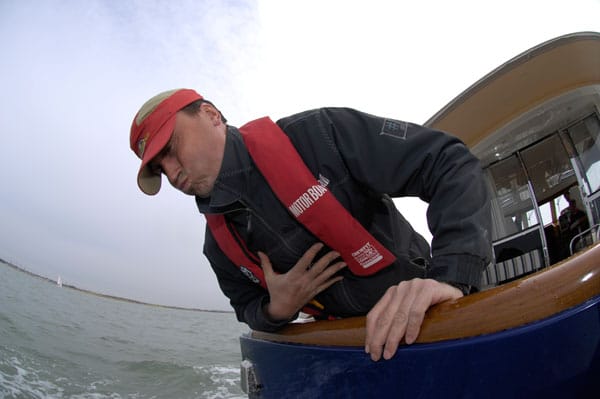
“Can I work aboard a cargo ship in exchange for passage?”
No. Modern union rules don’t allow it. You need to be trained and qualified nowadays to work aboard a cargo ship.
“What is there to do aboard a cargo ship?”
Not a lot, to be honest.
I mostly kept busy with the following activities:
- Reading
- Writing
- Exercise
- Studying Spanish
- Exploring the ship and chatting with the crew
- Watching the occasional movie
If the weather is good, you can also find yourself a nice spot out on deck and work on your tan.
The Cargo Ship Diaries
While on the ship I wrote a book. It has an average rating on Amazon.com and Amazon.co.uk (100+ reviews).
“What are the meals like?”
I was on a French ship with a French chef, so the meals were quite good. Lunch and dinner were both three courses and served by the chief steward on a white table cloth.
Breakfast was a help-yourself affair with cereal, bread, eggs… that kind of thing.
That said, you should expect the quality of the cuisine to vary greatly from ship to ship.
Also, to be clear, you don’t pay anything extra to eat while aboard the ship. All your meals are included as part of the $120/day or whatever you pay up front.

“What is the accommodation like?”
Again, this will vary from ship to ship, but you can expect most passenger cabins to be quite nice, akin to a decent hotel room.
My cabin aboard the CMA-CGM ship was quite spacious, with a double bed, a sofa, a private bathroom, and a big desk.
Here’s a 30-second video tour of it:
“What other facilities and services can I expect?”
Don’t expect Internet access.
Most ships have satellite internet access nowadays but usage is heavily restricted. I could only send and receive email via a custom address CMA-CGM set up for me. The system would save all the emails and send/receive in batches twice a day.
Aside from that, it’ll depend on the ship you’re on.
My cabin was cleaned once per day and I had access to washer and dryer to do my own laundry.
There was also a little fitness room on board for exercise, a small swimming pool for splashing around in, and they had a big closet full of DVDs that I could watch in the private passenger lounge.
Many ships will have a “slop chest” where passengers and crew can buy cigarettes, beer, toiletries, etc. Payment is usually only accepted in cash USD.
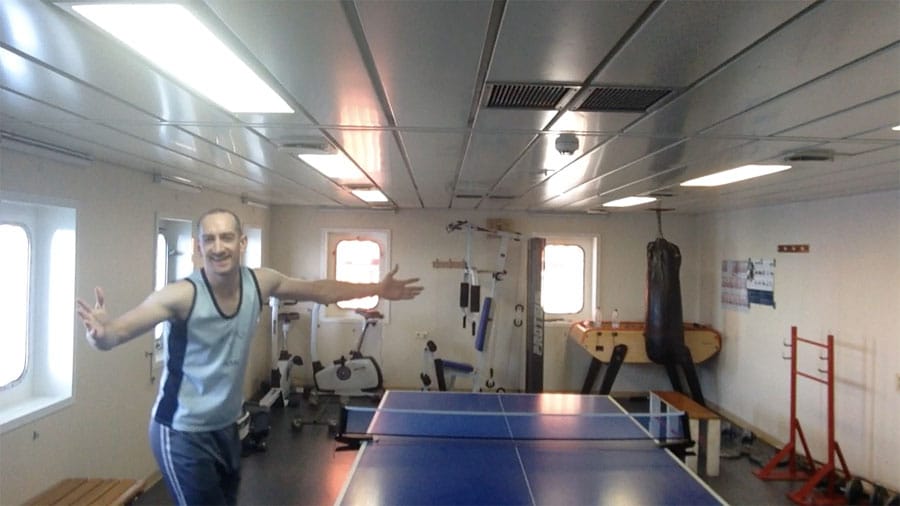
“Will I have much interaction with the crew and other passengers?”
You won’t have a ton of interaction with the crew as they are essentially working full-time jobs while aboard the ship. If there are other passengers, you can of course befriend them and wile away the hours together.
On my trip across the Pacific, I was the only passenger and so had several hours a day to myself.
Depending on the ship, you may get to dine with the crew and interact with them regularly that way. I was invited to dine at the captain’s table for dinner on Sundays, but other than that I was eating alone at my own table.
I was allowed to visit the bridge anytime I wanted – the captain gave me the code to the door – so I was able to wander up there and chat with whichever two guys were on duty. (Two people always had to be present on the bridge when the ship was in motion.)

“Is a cargo ship a good place to pick up chicks?”
Uh, no.
Female crew is a rarity.
All 33 crew on the ship that took me across the Pacific were male.
Twas just me and a boatload of seamen 😕

“Will I be allowed to explore the cargo ship freely?”
Probably not.
I wasn’t allowed out on deck alone for the first few days at sea because conditions were a bit rough. Later I was allowed go out for a wander but had to notify the bridge before and after.
As mentioned, I was given the code for the door to the bridge so I was allowed go up there whenever I wanted and chat with whoever was on duty.
To see the engine room and other interesting parts of the ship I had to be accompanied by a crew member. Which was actually better, because they were able to show me some cool stuff and explain how it all worked.

“What should I bring with me for cargo ship travel?”
Some suggestions:
- Lots of reading material
- A laptop with some movies and TV shows loaded up and ready to watch
- Seasickness tablets
- Toiletries
- Sunscreen
- A power converter 3
“What are some other things I should be aware of?”
- Age
If you’re over 70 years old, some companies will refuse to take you as a passenger. Many companies will also refuse to take young children. - Luggage
According to The Cruise People you’re allowed 100 kilos (or 205 lbs) per person.4 - Pets
Sorry, no cargo ship company I know of will let you bring pets aboard. Try Pet Movers instead. - Americans
If you’re a US citizen you’re not allowed travel by cargo ship between one US port and another. - Proper Attire
This gentleman will see you right…
- Getting Off The Ship
Often your ship will stop at many other ports along the way to your destination. You may not be allowed get off the ship at these ports. And even if you are allowed, you won’t have much time to go explore, usually a few hours at the most. Check in advance with your agent how much freedom you’ll have here. - No Fixed Schedule
Cargo ships can get held up in port by bad weather or other factors. In Japan I had to wait a couple of days longer than expected before embarking, and arrived in Peru later than expected.

“Is cargo ship travel more environmentally friendly?”
It took me 26 days to get from Japan to Peru on a ship that burned about 6 tonnes of fuel per hour. That’s 3,744 tonnes of fuel total.
Alternatively, I could have spent 19 hours on a plane to move between the same locations. A 747 burns about 10 tonnes of fuel per hour, so that works out to only 190 tonnes of fuel total.
Some people would argue that both the cargo ship and the plane are going to make those journeys whether you’re on them or not, so your choice doesn’t make much difference either way.
But it’s probably a bit more complicated than that.
In general though, according to a Defra study noted in The Guardian, transporting goods by sea is 44 times more efficient than transporting them by air.
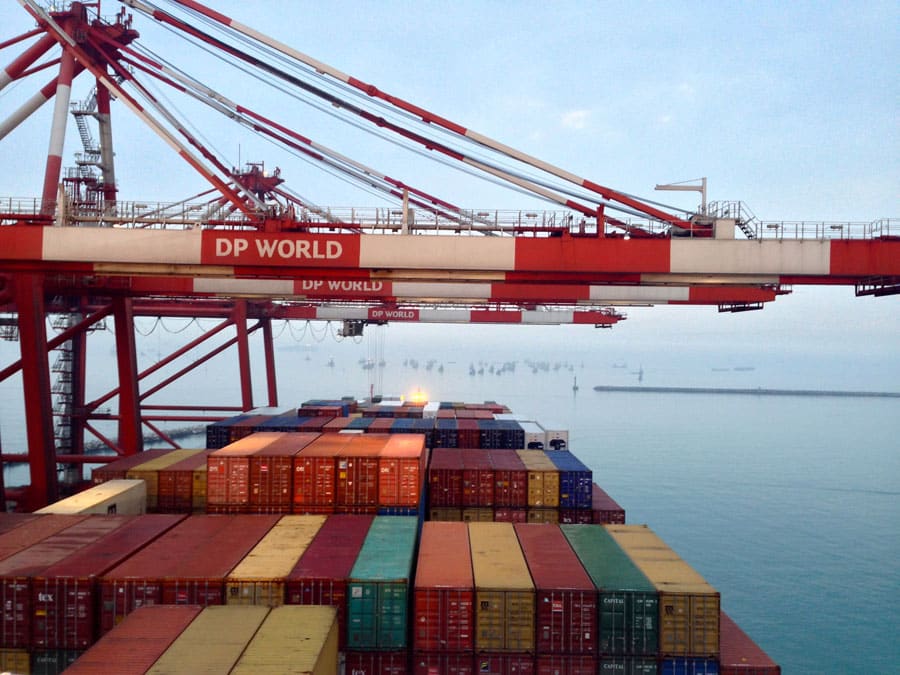
“Am I likely to encounter rough seas aboard a cargo ship?”
It depends on two things: the weather and the size of the ship.
The bigger the ship, the less you’ll feel the rolling. And you’re unlikely to encounter any bad storms since they see them coming and steer around them. (For example, we shifted course across the Pacific to avoid a storm near the Hawaiian islands.)
That said, there were nights where it was difficult to sleep because of the rolling.
I found that the “soldier’s crawl” position was the best to adopt to get some shut-eye.

“Is it possible to travel to remote Pacific islands on a cargo ship?”
It is indeed. A fine seafaring dentist by the name of Thomas Booth wrote about his experience cargo shipping to:
- French Polynesia
- The Tuamotus
- The Marquesas
- The Cook Islands
- Western Samoa
- Tonga
- Vavau
- Fiji
- Vanuatu
- The Solomon Islands
- Papua New Guinea
- Micronesia
Read his full report here: How to Take Cargo Ships to Remote Pacific Islands
What Else Would You Like To Know About Cargo Ship Travel?
Is there anything you want to know about cargo ship travel that I didn’t cover in this article?
Drop a comment below with any additional questions you have and I’ll reply ASAP.
- Did you know you MUST have insurance for cargo ship travel?
Consider signing up to SafetyWing, my favorite travel insurance provider (read my review). They offer low-cost, comprehensive coverage in 180+ countries.
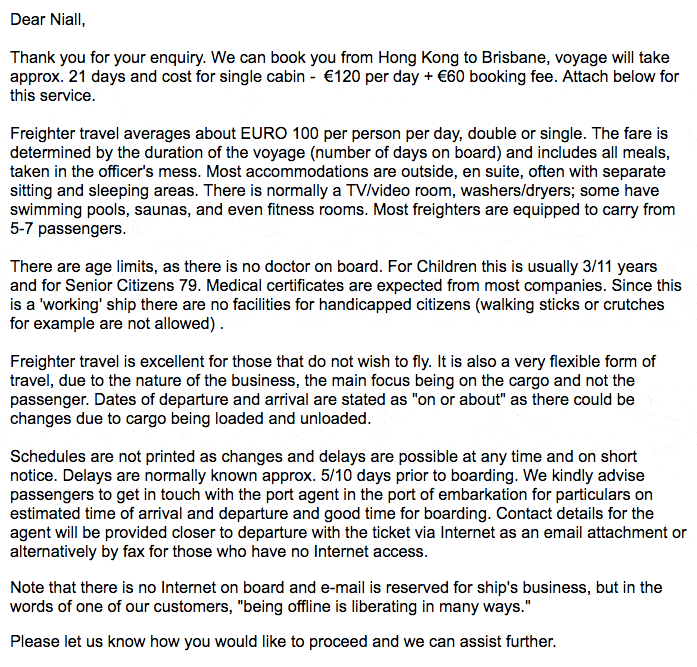
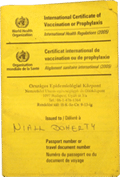 Proof of required vaccinations
Proof of required vaccinations A copy of your passport
A copy of your passport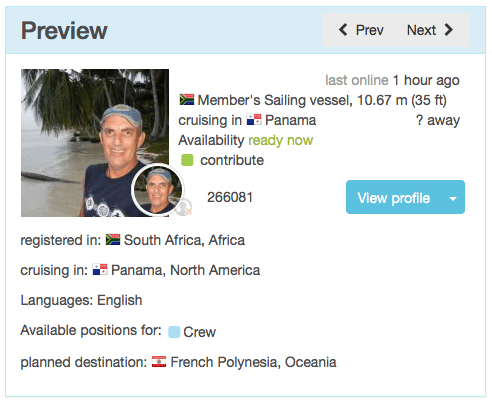






Very good article. You should publish a book on your experience traveling. My question is, who checks your passport and bags? I’m trying to depart USA and travel to Africa. Thank you!
They had a small security office at the port I left from. Someone there checked my passport and did a half-assed check of my bags. It was very quick. But other ports could be different.
It’s great that you mentioned that your ship would often stop at many other ports along the way to your destination, and you may not be allowed to get off the ship at these ports. My brother is a seaman, and he is sharing stories with me about his adventures. He also gave me some tips on how the load shipment on their barge to help my business. I’ll share this with him later. Thanks!
Hi Niall,
A question or two about passenger shore leave:
1. How do you get from the gangway to the street outside the port facilities?
2. Can you return on your own, or is it a very structured thing, i.e., everyone must return at a pre-arranged time, and transport back to the gangway together?
I know this may vary by ship and port, but what were your experiences?
Many thanks,
Dave
Really interesting … and informative…
I would really appreciate any help possible ..
I am looking to travel to far east .. thialand Burma Vietnam.. primarily thialand ,and would like to know how best to go about doing . This is not going to be a return journey ( not that it’s of any relevance ? )
I would like to know if possible ? Approx costs etc ? Are there quicker routes ie which ? .. timescale as when plan to do this uncertain at present … but possible within 3 months.. Oct.?
Hi Richard,
Your best bet is to contact the agents listed in the article. They’ll have all the latest info for you.
Are you allowed to bring more luggage than advertised and pay the extra surcharge? Like 6 guitars and 2 suitcases?
Is it possible to get to Ireland from the port of Houston this way?
Hey Terry,
You’ll need to check with an agent to get answers to those questions. The answer will be different depending on the cargo ship company. Some have more relaxed rules than others. See the list of agents in the article and shoot them a quick email. They should be able to give you the latest info.
Hey Niall!
I want to thank you for all the information you provide here!
This is completely new to me. I live in the Netherlands and fly once or twice a year to Dominican Republic, but there’s little social distancing possible inside an airplane and the idea of having to wear a mask for 10 hours sounds horrible to me.
This corona ordeal has made me think hard of an alternative mode of transportation and you answered all my questions and cleared my doubts on the very first search I did on the subject.
Thank you and happy cruising!
Humberto
Thanks, Humberto. Glad you found the info helpful 🙂
What an entertaining experience 🙂 You wrote your experiences and did the video like this is a fun thing to do in a lifetime. I really enjoyed how the whole cargo ship trip idea can turn into a good travel experience.
Niall, what happens if someone gets really seasick and needs medical help? Like being on a drip to avoid dehydration? That’s my biggest fear, and you say there’s no doctor on board. Is there a nurse or someone who can stick this needle into your vein and so on (sorry about that)?
There was no doctor on my ship but I believe lots of the crew had first aid training. If something really serious happened, I suspect you’d be airlifted off the ship. But they probably know enough to stabilize you for a few days until you’re closer to land.
I am wondering if they check your luggage before boarding and how well they do it.
Not looking to traffic stuff but I was thinking about having a little smoke on the ship
I can only speak for my experience getting on a CMA-CGM ship in Japan, but I was amazed at how light the baggage check was. Actually, I don’t think they checked my bags at all. Getting off the ship in Peru, they did take me to a security office and inspected my bags, but that was very light as well.
That said, I wouldn’t risk bringing anything illegal onto the ship. Depending on the port, they may have a sniffer dog, or a vigilant security guard. If they catch you, you’re screwed. Best-case scenario, you wouldn’t be allowed on the ship and would have no hope of getting a refund. Worst-case scenario, you could do jail time. Not worth it, IMO.
I need this…
Very well-written article! You are very good at explaining experiences.
Do you know if the ships are sprayed with insecticides? Cargo containers for international travel are sprayed, as are planes for some international travel. I wonder if the ships are, as well.
Thanks for the article and videos!
Hi Kim,
Sorry, I don’t know the answer to your question. If you contact one of the cargo ship travel agents listed above they should be able to answer that for you.
Niall,
Your book sounds very fascinating… Is there anyway I could purchase a hard copy?
Hi Adam,
Thanks for the comment. No hard copies of the book available, unfortunately. The demand just isn’t there for it!
Unfortunately the cost is prohibitive for us, but this would be a fun alternative! I worked on a fishing boat in Alaska for a couple summers back in college and loved the route the ship took back to Anacortes, WA through the Inside Passage. I’ll always prefer that kind of adventure travel over a crowded cruise ship or insanely uncomfortable flight. Great article!
Thanks for the comment, Carrie.
Working on a fishing boat sounds like next level again. Cruise ship –> Cargo ship –> Fishing boat 🙂
A great article! I am 77, female and plan a trip from Sri Lanka where I live, to UK my mother country. Only problem would be lack of alcohol…..as a post above, I would not enjoy 3 weeks without a glass of wine….shock! horror!
Your ambitions are so interesting and fun……my son drove Delhi to Dover on an Enfield…not so comfortable, but very cheap!!!!
Angela Sanders
Hello Niall,
My wife and I are planning a trip. Is it practical to try to include a cargo ship leg from Cape Town to Buenos Aires? I have looked some, but found little, perhaps due to my inexperience. Any suggestions are appreciated, thanks.
Regards, Harley Barber
Hi Harley,
That’s a question for a cargo ship travel agent. They will have all the latest info on what routes are available. See the list in the article for contact info.
Hello Niall
Great article.
Keen traveler looking for more sustainable means of transport than air (although all forms have their environmental cons).
Have read a few articles now and can’t work out how freight travel works in terms of exploring a destination on land. As you say you won’t get much time if any along the way at the ports of call, but is the idea to arrange to disembark at the eventual destination to spend more time exploring the end location before travelling on / home??
Hey Patch,
Thanks for the comment.
Yeah, if your goal is to explore a few port cities en route, then a regular cruise would be a much better option than cargo ship travel.
There are only a few reasons why you might want to travel by cargo ship rather than cruise liner:
That’s it really.
For me, traveling across the Pacific by cargo ship was a very cool experience, but given the expense of cargo ship travel I don’t have any strong urge to do it again.
I’m writing a story involved cargo ship travel. One unanswered question: does a passenger cabin have its own head/restroom?
Hey John,
I believe all the passenger cabins on the ship I travelled on had their own restrooms. Mine certainly did, with a shower as well.
hi Nail
am called janny thanks for the informantion. am just prepairing my jorney in august does shipping cargi check passports for depatures
Yes. I even had to have proof of onward travel from Peru before I could get on the cargo ship in Japan. It’s not really any different from air travel in that way.
Hi, I am told by everyone I ask that these merchant ships are now totally alcohol-free… Is this so? If I can’t have a glass of wine with dinner, I think I would rather fly… pity, as I am keen to try a sea voyage but hate the idea of the normal cruise liners.
I have no idea, Julian. Best contact the companies themselves and ask. Back in 2014 when I traveled by cargo ship alcohol was definitely allowed.
Hi, I’m thinking about going back home to Ireland soon and I like the idea of going by sea. I have a few tool boxes I’d like to take back. Are there any restrictions on taking tools with me?
Hi! In your opinion, is freight travel safe for young women? I would be very interested in doing this someday, but the lack of other women onboard and the “saucy pic” makes me a little worried about if I will be safe and respected.
I am thrilled to have found your site! My husband was an Able Seaman sailing out of the Sailors Union of the Pacific in San Francisco. While working for APL in the early 80’s, he was able to take me on a trip to Hong Kong, Taiwan, and Japan, for about 30 days. It was utterly amazing! I’ve dreamt of taking another trip on my own, and your site has given me the hope of making it so! Thank you!
Hi Niall. Loved your dancing video, not to mention the other clips, and all the great information! I have two questions.
First, of course there are origin and destination points for voyages, and a list of ports in between. Can you book to disembark BEFORE the final destination point?
My second question has to do with exercise – the ships are so large, is there enough space to ride a bicycle around or go rollerblading anywhere? Thank you.
Hi Melanie,
Thanks for the comment.
1) Yes. I believe they all allow that. It’s what I did.
2) There’s usually space, but I doubt they’d allow it for safety reasons.
NIall, just finished reading your story and watched the delightful video of You dancing all over he ship.. I was searching for information on travel via cargo ships, for my adult children , who love cruising and adventures. The article is very informative and helpful, so I thank you, and hope that I can find your book here in Sydney..
Is it possible to ride a cargo ship with a small doggie?
I know he says, “I don’t know of any cargo ship company that allows pets”, but it can’t be like, a universal worldwide absolute “law” that pets can’t sail. … can it?
I’m thinking about sailing across the Pacific from China (where I’ve been living for the past few years) to the U.S. (where I’m from), and I don’t want to put my pup in the cargo hold of an airplane, all alone in the dark for 14 hours. We’re together every day, all day. I even bring her to work with me. She would probably be terrified if I stuffed her in a box and handed her off to strangers to stick her in a cargo hold under a plane. So I want to travel by boat.
And also it would be nice to avoid flying, due to the ecological impact. And a “digital detox” for a few weeks is just what I need.
But I don’t have $5000 to throw around, so I’ll need to go for free or very-reduced-price.
But my pup is soooooo sweet and well-behaved. She responds to every command – it’s like she speaks English. She never, ever, ever pees or poops inside. She would cause zero problems and zero inconveniences for the crew, and in all likelihood she would brighten their voyage and they’d be glad to see her and pet her at mealtimes.
Do you think this is possible? Or am I totally wasting my time even thinking about cargo ship transport?
I very much doubt that is possible. Especially for free or at a very low price.
But contact the agencies I listed and ask them if there’s anything they can recommend.
Hi . I am a retired Master Mariner. I am 83 years old, pretty fit.
I would like to take a trip from Vancouver BC to Bangkok my wifes
home. I dont want to work my passage.
What do you think, am I to old or would my sea service open doors
for me. My wife would accompany me.
Thanks.
Hi John. I recommend contacting those agencies directly. They will be able to provide the most up-to-date info. The rules may have changed since I traveled on a cargo ship.
Hello Mr. Doherty, Niall
I wonder of what excuse is given for cutting-off the over 70 years of age from such a life-time voyage! My interest is to have such an experience starting from United States of America (departure) to East Africa, at Mombasa Port (destination). As much as I would love to benefit others by engaging in a similar movie/video to that of yours, I have Kiswahili language in preference. What do you think?
You did an Excellent Job. I loved it – Thank you. ~~~Anne
How is the customs inspection done when you arrive in Japan?
Full baggage check? Passport verification? Where should the fingerprint be taken? They just put a stamp and that’s good?
Thank you.
I can’t quite remember. I didn’t arrive in Japan by cargo ship though. I took a ferry from Busan, South Korea.
I don’t recall anything unusual about the customs inspection. It was fairly standard. I don’t remember them doing a full baggage check or taking fingerprints.
Tip from a friend of mine:
when leaving port for town trip, make sure you have written details of your ship’s berth in the relevant language and alphabet (ie chinese, arabic, cyrillic etc.)
hello Neill,
I will shortly be travelling by freighters from Southampton uk to New Zealand.
I find your stuff very helpful and entertaining, thanks.
One thing I have not been able to find out so far : is there normally a safe or other facility for keeping cash and/or valuables secure on board?
I think it depends on the ship, Jeremy. Ask an agent and they should be able to find out for you.
Hello Niell,
Your tips were very useful, I’m starting to get an idea of what cargo travel might be like. Given the fact that one might find themselves the only passenger, would travelling as a solo female present itself as a problem? I might add that I am no “Spring chicken” but when I read that there is a cut-off age, that was it, I’m going before my number comes up.
Hi Patti,
Traveling as a solo female would be fine. There’s no crazy partying or unruly behavior aboard. They’re all professionals working full-time on the ship. And I’m told that it’s not unusual to have female crew sometimes, too.
Hey Niall,
Just out of curiousity, how did you cross the Atlantic Ocean? I know there are cargo ships out of Miami or South Carolina that go to Spain, but I’m guessing you opted for non-cargo ship. I have been planning to do the same around the world with no flights, just trains and cargo ships across both Pacific and Atlantic, and that is how I came across your site, however I will be taking the Russian route. Your experience going from Turkey, through Iran, over to India and on to Thailand sounds very interesting. You and I are definitely cut from the same cloth, our sense of adventure and appreciation of minimalism is very similar.
Hey Jeff. Thanks for the comment. The Russian route would be amazing. Book recommendation for you if you plan to visit the Russian Far East: The Tiger by John Vaillant. It’s fascinating.
As for crossing the Atlantic, I took a repositioning cruise, from Miami to Barcelona (one stop at Medeira) on Norwegian Cruise Lines.
I’m 62 fairly healthy and want to travel to Ireland with my motorcycle and it’s camping trailer. What are my best bets. I too am writing a book “Me and My Harley”, getting around the world on a HD.
Hey Larry. Sounds like quite the adventure 🙂
If I were you I’d reach out to the cargo ship companies listed above and see what options they suggest.
Is there any customs check when travelling with cargo ships?
Yes, but it’s very light. They didn’t check my bags at all when I got on in Japan and barely checked them at all getting off in Peru. Not sure if that’s the norm. I hope it isn’t, because it didn’t inspire much confidence.
Hello
Enjoyed reading your account of freighter travel, have just travelled from Cape Town to Rotterdam on MV Green Mountain as only passenger and only woman on board. Really enjoyed it. Your descriptions pretty much echoed my experience except I always ate at the same table as the crew which probably gave more chances for good conversations. I disagree though when you say freighter travel isn’t more environmentally friendly. freighters are going because they’re transporting goods (whether we should be shipping so much ‘stuff’ around the world is another matter) and whether I am on board or not makes almost no difference at all. aircraft fly because (most of the time) they are transporting passengers – if the passengers didn’t go the aircraft wouldn’t fly, this is how I see it anyway.
Can you use a cell phone on a cargo ship
Hi Paulette,
No, a cell phone won’t work. You won’t be able to get a cell phone signal unless you’re very close to shore.